The question of choosing a camera is the first that any person who wants to enter the great world of photography has to face. Since the very beginning of the blog, this is probably THE question that comes up the most in the emails I receive.
This article is a update of the first blog postpublished in June 2010 (hence the old comments I keep): it was still valid, but it lacked the presence of hybrids, and some very useful details. So I decided to keep what was good, by completing and enriching it.
You can also watch this more recent video, if you prefer the format, or to complete this article 😉.
I decided to tackle this project after Lauriane’s email, which sums up all the questions you have about the choice of an aircraft. If you recognize yourself in it, this article is for you 😉
Hello Laurent!
First of all a big THANK YOU for your “learn photography” site. It is clear, very educational, full of advice and all this in a mix of modesty/knowledge and humour, in short I love it!
So I’m not going to be a groupie anymore… Actually I’m writing to ask your advice on buying my first camera. First of all, I apologize, I know that your blog is not commercially oriented, but the fact is that I’m completely lost among the quantity of models and that the salespeople I asked for advice in store were either clearly incompetent (and she’s a beginner, that’s for sure!) or more attracted by the sales/profit side of things. So while reading your blog I thought you might be able to help me in my choice.
My profile is simple, I’m a beginner. By that, I mean that my experience of photography comes down to my S3 smartphone and a week’s vacation during which I was able to use an SLR (the Canon 600D). I love taking pictures and I’d like to get more “serious” about it by learning the different techniques (blurry background photography or other kind of basics). So I would need a camera that is both complete and allows me to be creative while remaining simple to use.
I’m currently in Italy for a few months and at the end of April I’m going to tour the country by car. So I’d really like to be equipped with a good camera for sunny landscapes, portraits and low light photos (to visit the beautiful Italian churches for example). My first choice was an SLR (the Canon 600D, the Canon 1100D (enough to start with?) or the Nikon D3200), then I discovered the “hybrid” range that I really like. In fact at the beginning the “bulky” side of the reflex did not necessarily bother me because I always have a handbag worthy of Mary Poppins that can contain a reflex in its bag. Then I said to myself, if the photo quality is almost the same, I might as well opt for a more compact camera. And your article “why I chose a hybrid” reinforced me in the idea. Especially the more “spontaneous” and “discreet” side of the photo with a hybrid.
So here’s where I am, I have about fifteen tabs open on my poor overheated mac and I see “X”, “ISO” and numbers everywhere (^^). Among the models I’m looking at are the Panasonic GX1, the Canon G1X, the Panasonic GM1, the Sony RX 100, etc…
My budget is about 400 euros.
I wanted a short email and I’m sending you a pamphlet to read… Once again, my apologies and I’ll understand if you don’t have the time to look into my case! In any case, thank you for what you are doing and good luck!
Lauriane, 25 years old, desperately looking for a camera made for her 🙂
The purpose of this article is therefore to make a kind of “Ultimate guide” to help you choose a camera. Since I don’t want it to expire in 15 days with the release of a new camera, I’ll only do not and I will only advise not One model in particular, but I will try to guide you in your choice without either turn me into a mom You are adults, it is up to you to make the final choice of your device according to what is most important to you.
So I will start by explaining the 4 main camera families, the 3 most important criteria to choose one, and finally a step-by-step method to choose the final model.
Type of camera: compact, bridge, hybrid or SLR camera
First of all, I’m willing to bet that you’ve done your own research before coming across this blog, and that you’ve already heard about these 4 types of devices.
What are the differences between these 4 large familiestheir advantages and disadvantages?

Entry-level compact cameras
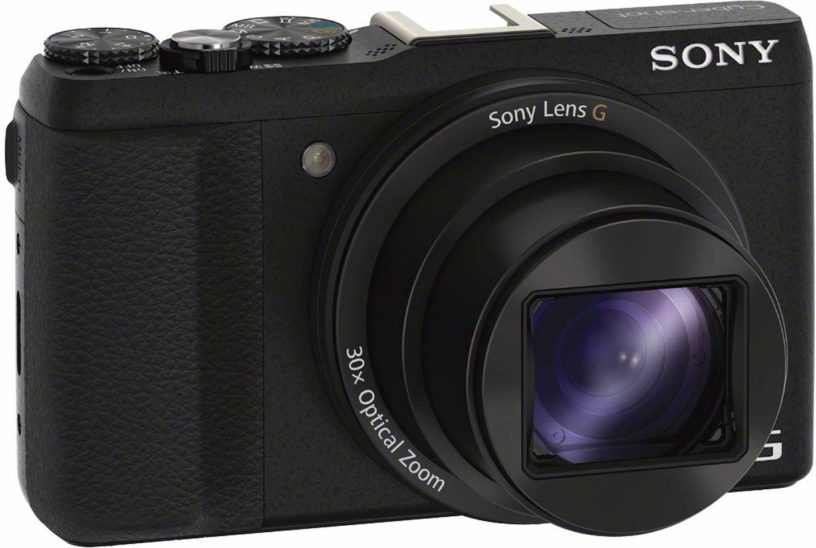
I’ll start here with the most entry-level devices: the small consumer compacts. There are not many left because they have largely been replaced by smartphones…and their target is very large. They’re not usually the models that you’re going to go to when you want to “better than his smartphone“.
Budget from 70 to 200€.
Honestly, you’ll get pretty similar results with a smartphone, and I don’t think that’s an interesting option anymore today.
The compact experts
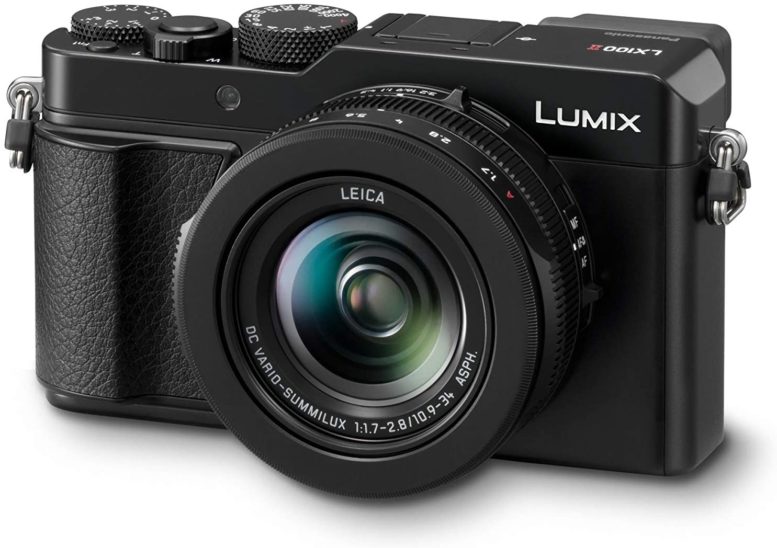
Over the past few years, there have been compact plus expertSome have small sensors, others have already larger sensors. (1 inch or even micro 4/3 or APS-C!)and more advanced functions, with variable prices.
Some top-of-the-range models with quite large sensors are quite credible cameras (for example the Panasonic Lumix LX100 or Sony RX100 ranges), but if you start taking pictures, I always recommend a camera with interchangeable lens at this price, to have more opportunities in the future.
Budget from 500 to 1000€.
Bridge cameras
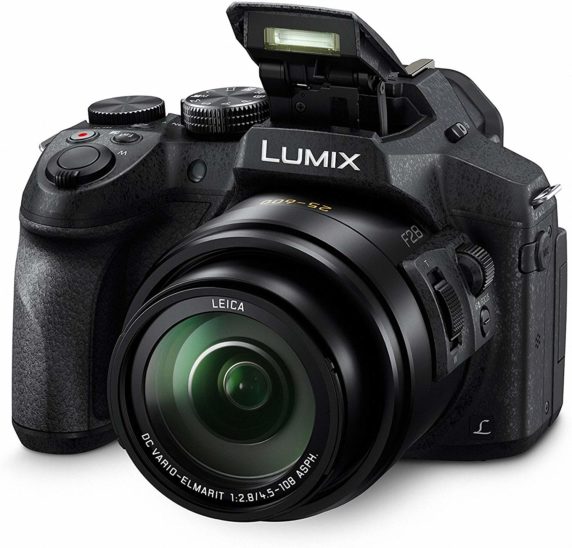
Budget from 200 to 750€.
In spite of its “little reflex face”, bridge is often closer to a compact : non-interchangeable lenses, etc.
Note that the entry-level bridges are quite similar to the compact entry-level bridges, but larger. In short, not very interesting.
In recent years, there have beenexpert bridges“, in the manner of the compact experts, who are relatively convincing. However, most retain a small sensorwhich necessarily limits (more about this below).
Supposed to be a compromise between compact and reflex, I have the feeling that the bridge is just a way to make the user go from compact to reflex smoothly, while leaving a few euros in the process. At the price of entry-level SLRs and bridges, it seems to me that the bridge is a good compromise. an investment that won’t lastand less interesting than a good compact in my opinion (which at least allows you to keep it everywhere on you).
The only really strong argument for bridge in my opinion is the ability to carry a large zoom (ranging from a wide-angle to a fairly long telephoto lens) in a reduced format.
SLR cameras
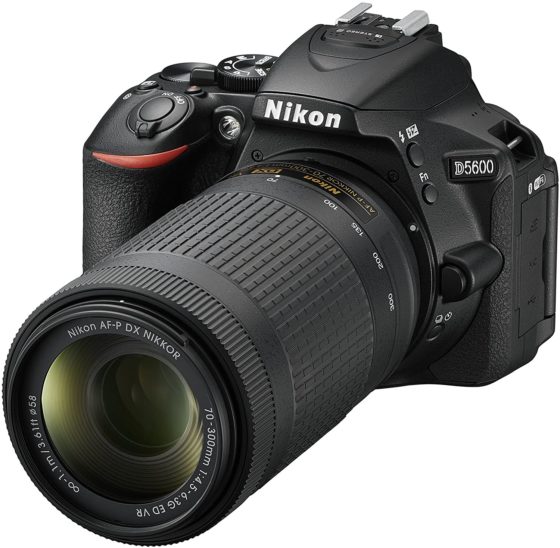
An SLR camera consists of two parts: the box first of all, what you’re holding in your hand, with the shutter release, the screen, and the adjustment buttons. It’s important in terms of ergonomics and adjustment capabilities, but today most sensors are excellent.
L’objective that you mount on it will probably have more influence on the final rendering of the image!
These two parts of the device being independent, this implies that you can change your goal depending on the situation. Indeed, even without any knowledge of photography, you can imagine that you need different lenses to photograph a tiny insect on a flower, a portrait or even shy birds that stay at a great distance.
Goals can sometimes be quite expensive, but they are a long-term investment and allow you to achieve the shots you want. But don’t worry, for starters the purpose of the kit is more than enoughas long as it’s quality ! If afterwards you wish to acquire another lens, I advise you to turn to my guide for buying a lens.
Budget from 400€ to infinity
Hybrid cameras (or “interchangeable lens compacts”)
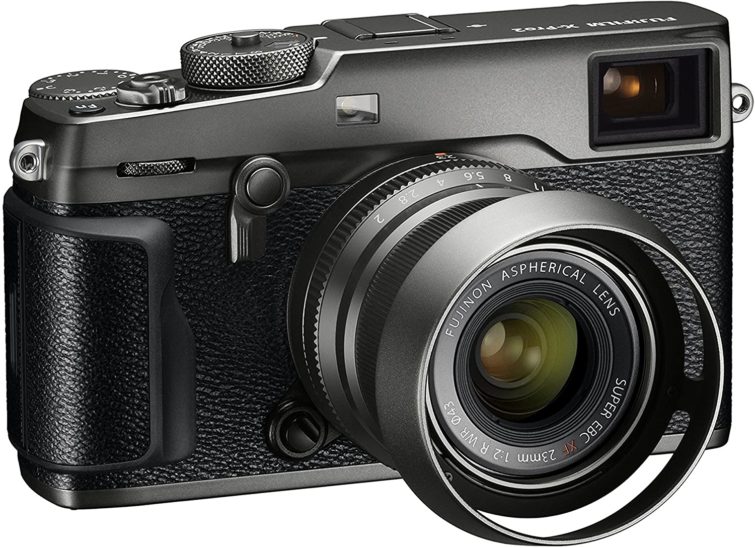
I’ll end with the hybrids, because it’s more complicated for you to decipher, especially since they’ve actually been implanted for less time than the others. Basically, the idea of the manufacturers was to combine the advantages of SLR cameras (large sensor, good image quality, interchangeable lenses), with those of the compact (small size, low weight). Hence the name ” compact interchangeable lenses ».
You will also read “mirrorless“here and there, which means”mirrorless“. Indeed, this feat is achieved by getting rid of the reflex camera mirror.
This is in theory, in practice it is more complicated, so much so that it is difficult for me to put advantages/disadvantages as for other families. Indeed, there are many different models, which are not equivalent at all:
- Compacts with interchangeable lenses (COI) but with a small sensorand therefore lose a good part of the advantages of reflex cameras (but gain in compactness). Fortunately they almost don’t exist anymore.
- Devices with a large sensor, but with a fixed target (not interchangeable). Rather, they fall into the category of expert compactThey are sometimes confused with hybrids, especially when manufacturers have designed them as “light” versions of their hybrids.
- And finally devices with a large sensor (4/3 microphone, APS-C or Full Framewe’ll get back to that), and interchangeable lenses. In short, the best of both worlds! Be careful though: hybrids with a Full Frame sensor have often very large lensesand the total compactness isn’t much less than an SLR.
Nevertheless, here is what can be summarized as advantages and disadvantages common to all hybrids or similar:
Budget from 400€ to infinity (or almost)
Well, as you can see, it’s a good thing, because half of the features are model-dependent. But it doesn’t matter, that’s why the rest of the article is here! 🙂
The main criteria for choosing a camera
After this essential clarification (pun! :D), I will be able to detail you what are the essential criteria to look for when you buy a cameraespecially your first “serious” device.
Indeed, I imagine that if you’re here, it’s because you don’t just take pictures with your friends in the evening and 3 pictures on holiday. In this case, frankly, use your smartphonethat’ll be good enough! 🙂 But if you’re looking to make nice pictures with an artistic vocation, or even to professionalize you, choosing according to the criteria below is essential.
Creative modes
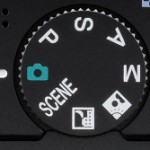
What’s very important is that you can fine-tune on the technical specifications of the camera such as aperture value, shutter speed, ISO sensitivity, white balance, etc. Without going into details here, these settings are important to get good shots and special effects that help you express yourself while photographing.
(I doesn’t get any more into the lingo : these terms are essential to know, and for that click on the links of the articles for more details 😉 )
The most important criterion is therefore that your device allows you theaccess to creative modesThese are the Program, Aperture Priority, Shutter Priority, and Manual modes. They are really critical to control your images. Most cameras offer them, but you have to be careful with inexpensive compact cameras.
Furthermore, you will see that it is much more comfortable to have a dedicated wheel which allows you to change modes easily, rather than going through the menus. As far as I’m concerned, it’s a purchasing criterion for a device: if the wheel is not present, I don’t buy.
Caution: some devices allow access to these modes via the menus, including hybrids. As far as I’m concerned, I hate to say it, but this is personal 🙂.
Note also that at Fuji for example, there is no mode wheel, but the ergonomics remain interesting. Fuji has chosen to do something that was done a lot in the days of film: the setting of the opening is done by a ring around the lensand that of the speed and ISOs by knurls on the device.
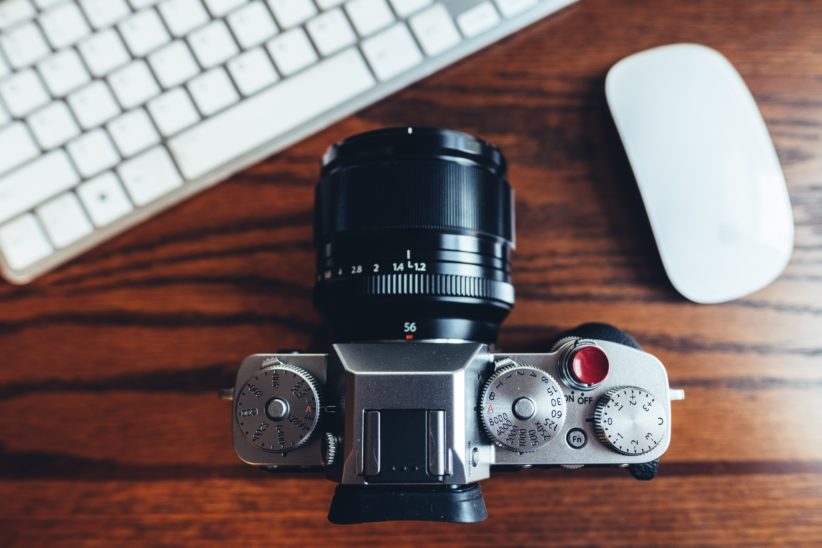
Personally, I find it most convenient if you work in manual modebut it’s slower to switch from mode A to mode S, for example.
The RAW format
If you’ve already read the blog, you probably know the importance I give to theuse of the RAW format. It’s really important for the final quality of your images to go through the post-processingwhich is much more flexible with this format. His presence is therefore for me a necessary condition if you buy a serious piece of equipment.
If you turn to hybrids or DSLRs, you’ll get RAW, but it won’t be not always the case on bridges and compacts. Make sure they offer it if you turn to these solutions.
Sensor size
The two previous criteria are indispensable and non-negotiableThe more so as they are not complicated to put together, even for rather tight budgets.
But there’s one criterion that’s really important for a lot of things:
- the quality of the images
- the versatility of the device
- your possibilities creative
If you’ve read the first part correctly, you must guess: this is the sensor size. Careful, I’m talking about the physical size of the sensor, not the number of megapixels (which is still sufficient today). If you want more details on this, I refer you to my article on the subject, but to summarize, a large sensor will allow you several very nice things:
- Achieving shallow depths of fieldwhich is a pronounced and aesthetic background blur. You won’t have to have it on all your pictures, right, it’ll just be possible. This is an effect that many photographers are looking for, especially for portraiture, but which can be used creatively in all areas. Without a big sensor, don’t even think about it.

- Second cool kiss effect: a better low-light rendering. A large sensor will generate less noise and better quality images when you run out of light (i.e. quite often in reality).
Exception though: if you compare a small sensor from today with a large sensor from 6 years ago, the newer one might be better. But generationalthe big sensor beats the small one !
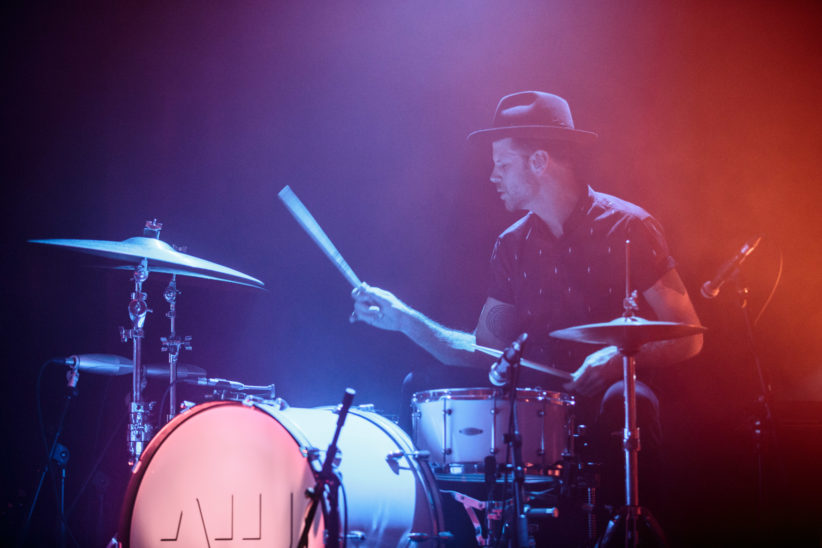
- In the same way, a large sensor has a greater dynamic than a small one. This is a criterion that you almost never hear about in comparisons, but which is nevertheless very important: a great dynamic will allow you to better manage high-contrast lighting situationslike a very bright sky on a summer afternoon. Careful, huh? no wonder neither if you photograph with the sun in front of you! But you’ll see the difference between a compact and an SLR for example. For more details, see also my video on the dynamics of the sensor 😉
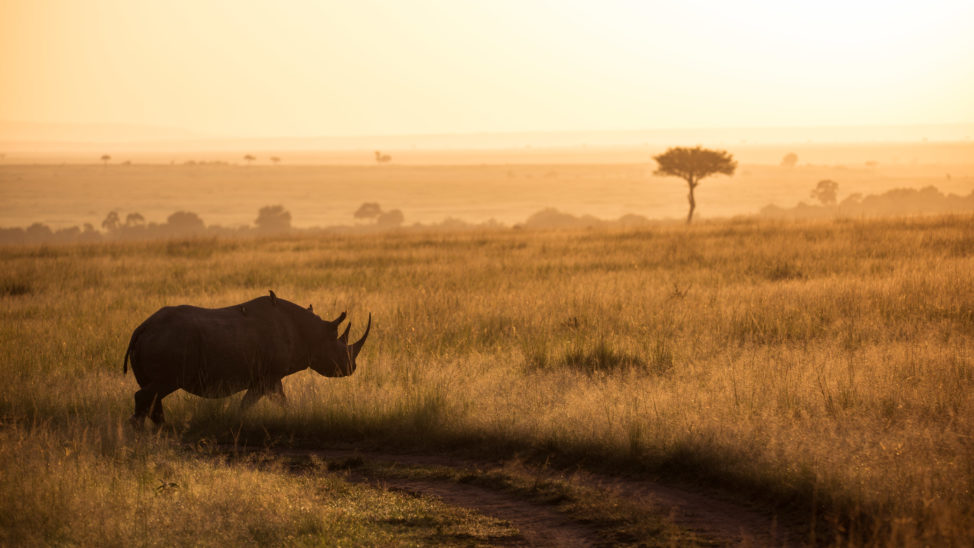
So my big buying tip is to direct you to a large sensor device if your budget permits. It’s always better, unless you want to really take it in your pocket (and there are even smaller and smaller hybrids).
What is a large sensor?
So you’re going to say to me: ” what exactly do you call a big sensor? ». That’s a very good question! For me, a great sensor is, in descending order:
- a Full Frame
- a APS-C
- a microphone 4/3
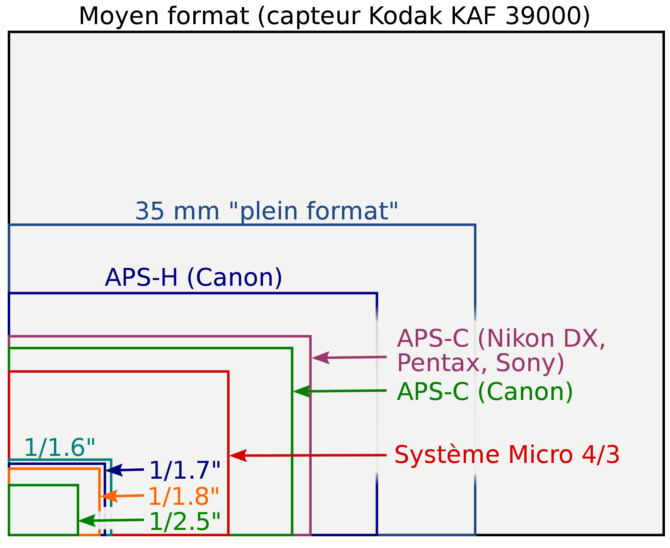
Smaller than that, I think. undersize to offer a real difference compared to the bridges and compacts, which have in theoverwhelming majority cases of really ridiculous sensors (except for recent and expensive models like the Sony RX1 for example).
Simply put:
- All DSLRs (even in the entry-level range), have a large sensor. APS-C for most of them, Full Frame for the bigger ones.
- For hybridssome have a sensor APS-Cwhich is the same size as most DSLRs. This is the case for some Sony (with a 4-digit model name)s, of the Fujifilm X Pro and XTand the Canon EOS M.
Disadvantage For technical reasons, the objectives are still quite large, and therefore they are far from fitting in the pocket. - Almost all the major manufacturers have now launched their range offull-format sensor hybrids (Full Frame): these are the ranges of the Nikon Z, Canon EOS R, Sony A7and Panasonic Lumix S. The quality is generally there, but for many it’s a top-of-the-range camera, and the price goes with it, not to mention that the lenses are usually very bulky, so we lose a little bit the advantage of compactness.
- Others hybrids have a micro 4/3″ sensor…a little smaller that still has excellent possibilities. There is the Panasonic G and Olympus PEN. They had a good idea: to get together around a table to agree on the same standard. Big advantage for you: the 4/3 micro lenses of the 2 brands are compatible with the 4/3 micro cameras of the 2 brands, so you have access to many more different objectives.
The advantage of this slightly smaller sensor is that the lenses are also smaller, especially those called “pancakes”, and therefore the whole is clearly becoming more compact. - Finally, there are other IOCs that have small sensors to present a real interest in front of the compact ones in my opinion (which will remain less bulky thanks to their retractable lens). This is for example the case of the Nikon 1 or the Pentax Q. These types of models tend to disappear today, given their lack of success and the rise of expert compacts.
There, so there, you’ve understood the key criteria in the choice of your camera. You will already be able to eliminate a lot of options, by doing some research online: it is very simple to type “”. [nom de votre appareil] size of the sensor” in Google to know what its size is (again, I’m not your mom, I’m not going to do it for you 😉 ).
But you still haven’t arrived at a final choice, as Lauriane said in her email.
How to choose the device model: step-by-step method
Now that you’ve understood the ins and outs, you’ll see that it’s going to be much simpler here, and almost automatic. We’re gonna use a online comparison from now on, since we have our primary criteria in mind. I recommend the Digital, it works well 🙂.
The brand
First of all, I would like to draw your attention to a very important point: there’s no need to get too worked up. For an equivalent range, 2 devices of different brands are often equally goodand won’t make a fundamental difference in your photography practice. What I mean is that a 200€ compact from either brand will often be about the same. Same thing if you hesitate between 2 entry-level SLRs from Canon or Nikon. I’ll come back to this, but I think it’s important to specify it now.
If you want to know more about what I think about the choice of the brand, you can read my article “Choosing your first reflex: croissant or pain au chocolat?”, it should make you de-stress 😉.
The budget
- Below 150-200€ choose one good compactwell noted on the Numbers. No need to get in your head.
- About 300€. (or even 400€ when selling a kidney) : think about turning to periodically. You will find SLRs (or even hybrids) from 2 to 3 years oldwhich work very well and will be enough to get you started. You’ll probably be much happier than a brand new bridge or compact. Don’t be fooled by the wi-fi, GPS and the like: it’s not essential.
- More than 400-500€ choose one reflex or a hybrid. Same entry-level, you’ll really enjoy it.
Hybrid or reflex?
This is THE question you’ve been asking yourself a lot today. Clearly, many hybrids have reached a reflex-like quality. However, a small footprint is always a major benefit (clutter, weight, travel and travel, discretion, etc.). So in which situations should you still choose an SLR?
To tell you the truth, in the previous version of this article, I was still recommending the SLR for wildlife, sports and entertainment photography. But in the 2020’s, this is no longer true: there are a lot of numerous options of hybrids very reagentsat thefast autofocuswith excellent capabilities in low lightand a full optical range that meets all needs.
Anyway, today, you will only see no fundamental difference in the rendering between hybrid and reflex. Especially if the sensor size is the same.
So this is really about personal preference The real difference in use is mainly in the type of sighting. I think that some people will never like the electronic viewfinder, but personally, I find the electronic viewfinder superior to the optical viewfinder today.
How to choose between the 2 or 3 finalists?
Normally, at this point, you’re going to have 2 or 3 cameras that tempt youWithout being able to choose: you have kept the cameras that correspond to the 3 main criteria mentioned above, you have filtered with your budget, you have chosen between hybrid and SLR. And you still have 2 hybrids or 3 SLRs at the same price, looking at the best rated cameras on comparison sites. And you don’t have the slightest idea of the differences between them, despite reading numerous tests or comparisons.
Well, good news: there’s not many of them! As I said earlier, for the same range, there are not many differences between competing devices. An Olympus PEN and a Panasonic GF of the same generation are quite similar. Same for Canon and Nikon SLRs of the same range.
So there’s no answer to ” is the Nikon Thing better than the Canon Thing? » ! 😉
My best advice here is to go take them in hand in store look at the one you feel most comfortable with. Handle the device, see if you can find the settings easily, if the menus are intuitive for you, if it “falls within your grasp”. It’s a bit like looking for an apartment after all: do you have a crush or not. It may seem trivial to you, but it’s really, really important to have a intuitive handling It will make it easier for you to shoot, and the pleasure of taking pictures.
This will also allow you to notice small details that you may have overlooked in the tests, but which are important. for you :
- the presence of a viewfinder
- a swivel screen
- …
These criteria are really very personalpersonally I don’t find the swivel screen important, but you have the right to take that into consideration 😉.
What’s the goal to begin with?
The choice of a lens is also a very vast subject, which I cannot deal with in full here, as this article is already very long! If you’re interested, I wrote an article on the subject, and actually a complete digital book, and its adaptation as a paper book at Eyrolles 😉
So I’m going to focus on thestarting point. If you have a limited budget, don’t bother: take the device with thekit’s purposeIt is almost free (the kit is hardly more expensive than the device alone). It’s limited but it’s not a disaster either, and allows you to try many things. For example, I took this picture with a simple 18-55mm camera:
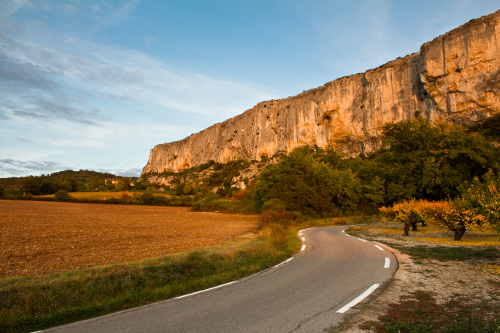
If you ever have a little more money, I advise you to take a lens with the same kind of focal length (12-50mm on 4/3 mic, 17-50mm on APS-C), but with an maximum aperture such as f/2.8. Think about looking at third party brands like Tamron and Sigma, which have good alternatives at lower cost.
Choosing this type of lens will avoid many of the pitfalls encountered by 99% of beginners: getting a nice background blur, and having sharp photos in low light.
When and why change cameras?
I wrote this article for those looking to buy their first camera serious, but I would like to make a few lines to help those who already have one, and are hesitant to do so. change. In this case, you need to ask yourself the right questions, and reason in terms of needs and limitations of your current equipment. You must have a compelling reason to change hardware, not just want to buy a newer model (otherwise keep your money and buy yourself a guitar, champagne or a Ferrari :D)
The idea is to find out where you currently feel limited. In a lot of cases, that can be filled by a objective rather than a new device. I would advise you to look at this side first, because the lens will last longerand goes a lot more influence the quality of the image.
If you need to change the case, you should know why better autofocuslarger ISO sensitivityspeed, speed of the gustetc.
Here, I hope this (long) article will help you when choosing your camera. Think about the share with your friends who are wondering, because I remind you that this advice will still be valid, even in 1 or 2 years! 🙂
And don’t forget to share the article! 🙂

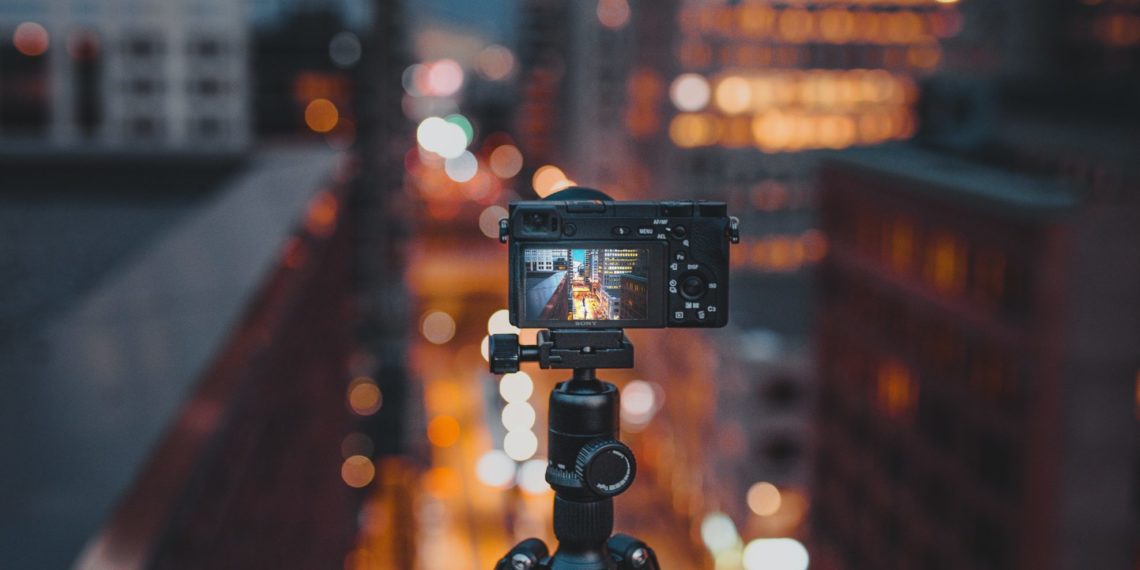


Discussion about this post